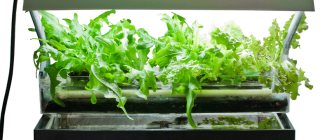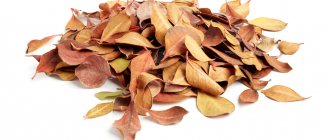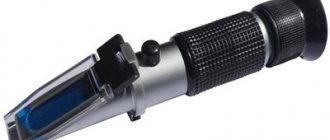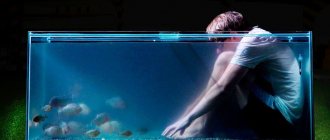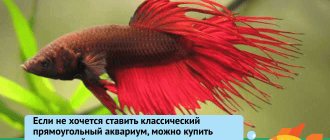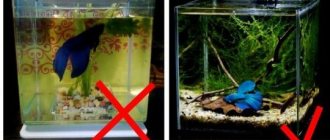Turtles are very cute and easy to keep and care for, making them one of the most popular pets. These creatures steal your heart with their charm and with the right care and environment they can become lifelong friends.
There are many things that are necessary for a healthy and happy turtle tank, including plants.
Turtles prefer live plants because they love to eat them and they also help mimic their natural habitat.
Benefits of Having Live Plants in a Turtle Aquarium
Keeping live plants in a turtle aquarium has several advantages:
Backup filtering
One of the biggest benefits of having live plants in your turtle tank is the ability to filter the water. Living plants can filter out ammonia, nitrates and other organic compounds that are undesirable in the water.
They make the water cleaner, and because they act as a filtration system, they reduce the strain on your aquarium filter.
beauty
Living plants, among which turtles swim, are part of the habitat of these mammals. An aquarium without plants looks unnatural and unattractive to both you and the turtle.
Adding plants to your aquarium will make it look more beautiful and also make it more comfortable for your pet.
Oxygen
Plants release oxygen, and this also happens underwater. Increasing oxygen levels is beneficial for your turtle, especially if you have multiple aquatic pets in your aquarium.
Happy pet
The presence of aquatic plants in a turtle tank will make your pet feel at home.
Turtles eat certain aquatic plants, and if you have them in your tank, they will sometimes eat them and also hide behind them. This makes their maintenance more comfortable and keeps them healthy.
Decoration features
They use massive stones, driftwood, and artificial plants. Experienced aquarists call plastic buildings “kitsch” with an unknown chemical composition, and they avoid placing them.
The decorations also serve as shelters. Young turtles especially need shelters. Decoration with artificial plants is necessary. Red-eared turtles eat natural greenery.
Decorative elements should not have sharp fragments. Animal skin is easily damaged.
Disadvantages of Living Plants in a Turtle Tank
Special care of the substrate
Some aquatic plants require substrate for root growth. If you have this type of plant and have substrate in the tank, you will need to vacuum it regularly to remove feces and food debris. Their accumulation in the substrate can pollute the water and cause illness in the turtle. Turtles will also dig up plants for no reason and you will need to clean up the mess.
Toxic plants
Not all aquatic plants are suitable for turtles. Some of them are poisonous if eaten.
Which aquaterrarium is suitable?
The main criterion when choosing is safety. The beauty of the aquaterrarium should be secondary. Otherwise, you risk purchasing a toxic product that will poison your pet’s health.
The second criterion is suitable size. Based on how tall your turtle breed will grow. As a rule, the “height” of males is up to 17 cm, females – up to 20-21 cm. The reptile should feel free inside and move around without the feeling of limited space. As for the volume of the aquarium, this is at least 100, and preferably 150-200 liters for one individual, and 250 for two. If you take a smaller volume, the water will become polluted faster, and this is fraught with the development of diseases in turtles. The water level in the aquaterrarium should be at least 40 cm in order to change it less often.
If you take a young turtle, it is permissible to plant it in a small aquarium and then replace it with a larger one.
The aquaterrarium must have a lid, otherwise the turtle may decide to go on a journey. But the reptile will not last long without water, so provide a lid to prevent escape and possible death of the pet. If your aquaterrarium does not have a lid, then there should be at least 15-20 cm of reserve above the water level.
Flooded Aquatic Plants for Turtle Aquarium
Eleocharis parvula
First on the list of the best live plants for turtle aquariums is Eleocharis parvula. It is similar to regular lawn grass, the only difference is that lawn grass is not in water.
Eleocharis parvulus forms a good layer of substrate for turtles to walk on comfortably as they move around the tank. Turtles can eat some stuff, but the plant isn't so tasty that they'll level an entire field. Plus, it doesn't require much lighting or CO2, plus it doesn't grow as fast, so it won't take up too much space in the tank.
Anubias barteri
These are slow-growing, broad-leaved plants that are an excellent choice for a turtle aquarium. This is one of the easiest aquatic plants to grow and care for. It is also inexpensive and readily available at pet and aquarium supply stores. Anubias plants do very well in low light, don't care at all about pH, and aren't palatable, so fish and turtles leave them alone.
Anacharis or Fishbreeder (Lagarosiphon major)
It is the most common aquatic plant sold for use in aquariums. Sometimes it takes root at the bottom, and sometimes it floats freely. The long stems are covered with dark green leaves that curl back. It is an excellent oxygenator that grows very easily from cuttings and can withstand very low temperatures. The plant provides good nutrition for turtles.
Java Moss
The real beauty of Java Moss is that it doesn't require much lighting or air. It does well in dull and murky water, which means you can keep it in almost any freshwater aquarium. Java moss is also good for water filtration, which is essential in any turtle tank. Java moss is good because it grows along the substrate, stones, driftwood and other objects in the aquarium. This means that it grows easily almost anywhere, so being eaten is not a big problem, and it is also easy to care for.
Thai fern (Java Fern)
Another good option to consider. Although it needs to be secured with small rocks or driftwood, it makes a great addition to any turtle tank. Just tie it to any bottom surface with fishing line and you'll be fine. Ferns are excellent at removing waste from water, acting as a natural filter. They are not that tasty to the turtle, although they may nibble on them from time to time, but they will not eat the whole plant at once. Additionally, low CO2 levels are not a problem for the plant either. This is a very hardy and easy to care for aquatic plant for any freshwater aquarium.
Common holeweed (Moneywort)
Common hole plant is another great option when looking for live plants. It has a beautiful appearance, which makes the turtle tank more attractive and cozy. Grows straight, with long and tall shoots.
In addition to aesthetic appeal, it serves as a treat for turtles. Hollowweed grows well in the presence of plenty of sunlight and CO2.
Hornwort (Ceratophyllum)
Hornwort is a great addition to a turtle tank. It does not reach the surface, but grows underwater, providing filtration and beauty, and can withstand a variety of water conditions as long as they are not extreme. Turtles will happily eat it, but this is not a problem as it grows quickly. It is not demanding and will survive without any effort on your part.
Red Ludwigia (Red Ludwigia)
The reason many people love red ludwigia is that it is very low maintenance. You will not need to provide it with any special nutrients, lighting or aeration. It will do just fine on its own and will feed on the nutrients in the water. Its ease of care makes this plant the best choice for turtle aquariums.
This is a taller plant, so you will need to add a couple of bushes at different ends of the tank to avoid overcrowding the turtles' basking area. It is also a very fast-growing plant that turtles love. Although turtles can eat a lot of red ludwigia, it grows very quickly so it is replenished in no time.
What to feed baby red-eared turtles
What a little turtle eats determines its future health. The diet of young animals must include seafood. It is useful for armored babies to hunt aquarium fish. Turtles can be given clams and pieces of shrimp, but the food is always served raw. You cannot feed small red-eared turtles with products of plant origin - such food will not bring the desired benefits.
The first year of life of red-eared reptiles is very important for the formation of the skeleton and strong shell. For the healthy development of the body, babies need calcium and vitamin A, which is aimed at renewing skin cells and creating keratinized tissue. The turtles are fed daily, adding bone meal to the portions. In addition to fresh fish, you can purchase combined dry food for young animals at a pet store, after consulting with the seller.
Floating plants for turtle tanks
Floating plants are plants that float on the surface of the water and have roots that extend into the water. They can absorb all the nitrates that your turtle tank produces through the nitrogen cycle.
In addition to absorbing all the waste from the tank, they also help reduce unwanted algae.
Limnobium laevigatum or Amazonian frog duckweed
A beautiful plant with broad leaves, it looks beautiful, has a smooth texture and is quite hardy. This is a really good option for a turtle tank, and an ideal floating plant for beginners.
Water Lettuce
Water lettuce is another great option for your turtle tank. These are floating plants resting on the surface of the water. Their lighting needs will definitely be met due to the fact that they are on the surface and therefore will be able to absorb a large amount of UV rays.
Moreover, turtles love to eat lettuce, and it also provides good shelter. This is a fairly hardy plant that will have no problems surviving in a turtle aquarium environment.
Water Hyacinth
Water hyacinth is also a great floating plant option. Except for its appearance, it is very similar to water lettuce. It floats on the surface of the water, so it easily receives air and light. In addition, it is also a very hardy and resilient plant, so keeping it alive is not a problem.
Turtles love to eat water hyacinth, so it makes a tasty snack. It also looks very beautiful, especially when its flowers bloom.
Plant-based food
Plant foods are necessary for all turtles, but as they age they make up the majority of their diet.
Grass
Animals love plantain, clover, vetch, dandelion leaves and rhubarb. In addition, they can be given lawn grass, coltsfoot, sprouted barley and oats.
Fruits and berries
It is recommended to cut plums, apples, pears, bananas, peach, mango into small pieces and offer them to the turtle as a treat. Tangerine, orange, apricot and melon are also suitable for feeding animals.
Aquarium plants
It is preferable to plant duckweed, spirogyra, water beetle, and pond algae. The turtles do not allow the plants to grow even a little - they are instantly eaten. You should refrain from planting elodea! The plant secretes poisonous sap and poses a danger to animals.
Vegetables
The diet should include bell peppers, cucumbers, tomatoes, zucchini, and eggplants. You can’t do without pumpkin, radishes, legumes, carrots and beets. Broccoli, celery, and dry seaweed are given as additional food.
Mushrooms
Pieces of boletus, champignons, and russula are recommended to be given to animals no more than once a week.
Attention!
Human food is not suitable for turtles! They will also happily eat food intended for other animals, but it will not benefit the turtles. It is forbidden to feed citrus peels or give berries with seeds.
Temperature
The recommended water temperature for the red-eared turtle is 23-28 °C. The temperature on a shaded (cold) island of land should be 23-25°C, and on a brightly lit (warm) area - 28-32°C. This is an absolutely ideal option for arranging the most suitable temperature conditions for the red-eared turtle.
Article on the topic: How to make an aquarium (aquaterrarium) for a red-eared turtle with your own hands at home
To create such temperature conditions, heating is necessary. The main heating is carried out using a special lamp, which is fixed above one of the islands. If the temperature when heating with a lamp is insufficient, then additional heating is used.
You can use a heater in the form of a long glass tube that is immersed in water. Particular attention should be paid to its location: the turtle should not be able to accidentally bite the electrical wire or damage it with its shell.
Filtration
The health of the turtle directly depends on the state of the water in the aquarium, so it must be kept clean. For a terrarium, it is better to use external aquarium filters of any type.
It is not advisable to install internal equipment, as it quickly becomes clogged with suspensions, losing efficiency.
The better the filter works, the less often a complete water change will be needed.
To maintain ecological balance, regular weekly replacement of half the volume of water is necessary. Before replacing, the water is allowed to settle.
Incandescent lamp
An ordinary incandescent lamp (an energy-saving lamp will not work) is installed above the island at such a distance that the air temperature above this area of land is 30-32 ° C. At night it is turned off.
UV lamp
Some owners of red-eared turtles neglect to install a UV lamp. However, this is a vital component of a reptile’s home. Its absence often leads to the development of diseases that can be fatal. Ultraviolet light is extremely important for the health of the red ear. It has a beneficial effect on metabolism, improves the condition of the reptile’s shell and skin, and helps the absorption of calcium. The UV lamp is placed at a height of at least 30 cm above the shore. It should burn for at least 2-3 hours a day.
Today you can purchase special lamps for terrariums with the required wavelength in almost any specialized store.
Soil selection
It is not necessary to line the soil for the red-eared slider. The animal can do without it, since it does not feel the need to dig in at the bottom. There is no need to stop using it. Soil is needed in an aquarium as a natural filter, as it traps small particles of dirt at the bottom. Bottom covering is necessary for some types of algae. It affects the development of beneficial bacteria, which is important for the formation of healthy microflora in water.
If you lay the soil in the shape of a slope from the back wall of the aquarium, or choose larger stones for the far part, the container will appear larger.
When choosing soil, you should pay attention to its composition. It is not recommended to use artificial substrate. Toxic substances can get into the water from plastic elements. For the same reason, you should avoid colored mixtures. Pets can break glass balls in their beaks and injure themselves.
Natural floorings that are best for a tortoise include:
- sand;
- rounded pebbles;
- shell rock;
- marble.
Limestone soils release potassium into the liquid. This may increase water hardness. When there is an excess of elements, a white coating forms on the reptile’s shell and the surfaces of the aquarium. Therefore, shell rock, marble and coral sand should be used carefully.
You can put an even layer of river sand in the red-eared turtle's aquarium. It is worth considering that grains clog the filter and can cake and rot. Such soil complicates the care of the aquaterrarium, but is safe for the reptile.
Suitable soil stones should be:
- without sharp edges and edges;
- rounded;
- more than 5 cm in diameter.
Small turtles can get stuck under large rocks, so it is best for young turtles to avoid using them.
Before laying the flooring on the bottom, it is recommended to rinse it under running water. It is more convenient to process large volumes in portions. The procedure is repeated until the water flows clear and clean. Non-certified materials can be disinfected before washing. To do this, boil the soil for 40 minutes in boiling water, or keep it in the oven for an hour at a temperature of 100 °C.
Article on the topic: Water temperature for red-eared turtles in an aquarium, how many degrees is optimal?
How to equip an island?
The red-eared turtle leads a sedentary lifestyle, spending a lot of time not only in the water, but also on the shore, so the aquarium must be equipped with at least one, or preferably several, land areas per turtle (one in a shaded place, and the other in a brightly lit, warm place ). On land, the turtle receives oxygen and enjoys UV rays.
What is important to consider?
- The land area should occupy at least a quarter of the entire bottom area.
- Land areas should have a sloping shore that smoothly rises from the bottom. Steep cliffs are not allowed. You can build a ladder or a mini-ladder, put a large stone or a grotto with gentle walls.
- The surface of the islands must be made of high-quality materials and be rough. If there is soil on the island, it should not crumble into the water.
- If there are several turtles, then the land must have such a total area that all individuals simultaneously have access to it and can fit.
- If there are several islands, then some of them may not be completely dry, but covered with water by several millimeters.
The island should be located approximately 30 cm below the edge of the terrarium so that the animal does not get out and run away.



